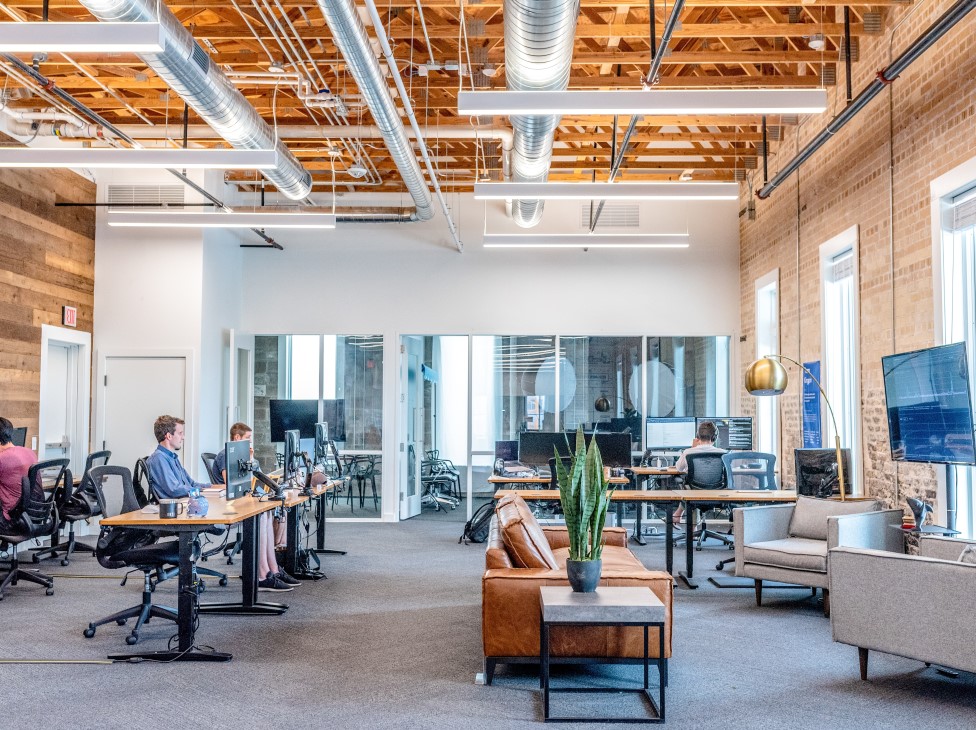It’s being described as the golden age of the employee and it could have big impacts on employers and their landlords.
Companies will need carefully-constructed policies and strategies to deal with the eventual return to the corporate workplace. With health, safety and well-being remaining top-of-mind, workers are also demanding more choices regarding where and when they work as the “purpose of place” becomes redefined. These were among the comments presented in the “Integrating hybrid workplace tools and mobile workers” webinar presented by Realcomm.
“COVID-19 provided a big slap across the face to companies and landlords as workers realized they could effectively work from home and they don’t care to return to the old way of doing things,” explained Kay Sargent, Senior Principal, Director of Workplace, HOK. “Many employees are saying that 30 years ago they had to travel to the workplace every day but now, with advanced technology and changing priorities, they don’t anymore. Environmental, social and political issues significantly changed things starting 20 years ago and now is the time to acknowledge it.”

Peter Van Emburgh, Head of Industry Strategy for Density, said, “Most people are eager to return to the traditional workplace, but are now empowered and want to decide when and where.”
That desire is sufficiently strong and widespread that it could impact talent recruitment and retention for some companies.
“Many [employees] are saying if you don’t let me work from home at least part of the time, I am leaving,” added Mike Petrusky, Director of Events and Growth Marketing, iOffice and host of the “Workplace Innovator” podcast. “We have entered the golden age of the employee and they are resisting the return of working in their old silos.”
“Approximately 40% of all employees are considering a post-pandemic job change and the workplace environment is placing a significant role in this movement,” stated Edward Wagoner, CIO for JLL. “Companies are encouraged to make significant investments in their technology infrastructure to provide additional options on when and where they perform their work.”
“The way I see it, employees will have three different workplace scenarios, which will be their home, the traditional office environment and a third, spoke model located away from the main headquarters and provided by the enterprise,” added Christopher Shaida, CEO RealFoundations. “Technology and the modern way employees work will allow that to happen seamlessly. Think about the employee dealing with an energy-sapping commute early in the morning, and faced with the prospect of another difficult commute back home at the end of the day. How much passion do you think this person could summon up for a long, tedious group meeting beginning at 3 pm? Companies should allow employees to perform work at home that they can complete independently. Other solutions are needed for work that requires collaboration. Match workplaces with the work you are asking the employee to perform.”
Employees who became accustomed to and effective at teleworking during the pandemic, are now questioning “what is the real purpose of place and where am I most comfortable and productive,” added Sargent. “Then add the ‘fear of missing out’ factor. Are employees losing valuable experiences by not returning to the workplace, including casual and random conversations and mentoring? The answer is yes. What are the amenities in the office that they cannot access at home? Do people have Zoom Doom? There is also the issue of meeting equity, in which the participants dialing in don’t feel on the same level as those physically sitting inside the conference room. As workers migrate back into the office, companies need to be absolutely certain that their first experience is not a poor one.”
New products are being developed that “will balance out meeting equity, including the ability to access different viewpoints of the room and providing greater control to the participants,” Van Emburgh said. “This will make it easier to feel included when working from home.”
“Most employees are tired of working from their homes and want to return to the workplace, but landlords need to reconceive their indoor spaces to make them as safe and attractive as possible,” Shaida concluded. “People want to be with other people but also want control of their environment.”